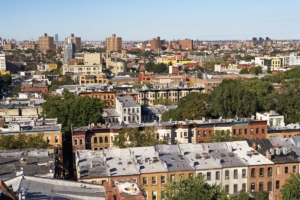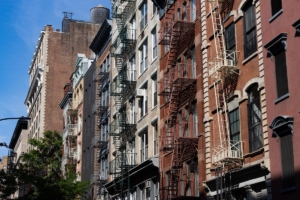The luxury market is a constant source of interest in New York City. A lot of this interest is drummed up by aspirational desire: To see inside a $100 million condo is to briefly occupy an entirely different world than one might occupy every day. It also helps that plenty of luxury units are occupied by celebrities and business titans who generate their own broad interest.
Although we have a general idea of what luxury means, it remains a largely subjective term. In order to report on luxury market performance in our monthly and quarterly market reports, however, the StreetEasy Research team created a non-subjective definition of luxury.
Our definition of the luxury real estate market relies on a few key observations:
- First, luxury properties vary by neighborhood. A uniform price floor, which might be pulled up by large luxury markets like the Upper East Side, will fail to capture luxury properties in smaller markets where prices may be lower.
- Another observation is that luxury properties are often new to the market, so using a repeat sales index approach (like the StreetEasy Price Indices) wouldn’t be effective since it would exclude brand new listings.
- Finally, luxury properties tend to be distinctive, meaning that those that are on the market can change the inventory picture a lot from one period to the next.
Using these observations, StreetEasy created the luxury price tier. This price tier defines luxury real estate by using a price floor that is based on the 90th percentile recorded sale price of a given area for a particular time (i.e., the most expensive 10 percent of the market), because that will adjust for differences in a given area. That price floor is averaged out over the current period and two prior periods to smooth out changes in inventory in an area’s luxury market. The price floor is also forecasted out one period and that forecast is included in the average, making the final price floor an average of four periods. The forecast is included in the average because a backward-looking average of a trend tends to understate the trend.
Having built a dynamic luxury price tier, we can get a sense of the luxury market and how its performance compares to the overall markets in Brooklyn and Manhattan. According to our Q3 2015 Quarterly Report, for example, luxury properties spend considerably more time on the market. In Manhattan, luxury listings were on the market 39 days longer than the typical listing in Q3. In Brooklyn, luxury listings were on the market for 18 days longer. We also found that while all homes took longer to sell in Q3 than they did last year, the slowdown was much greater in the luxury tier.
Stay updated on the luxury market in Manhattan and Brooklyn by referring to StreetEasy’s monthly and quarterly market reports, which now include the luxury price tier.









